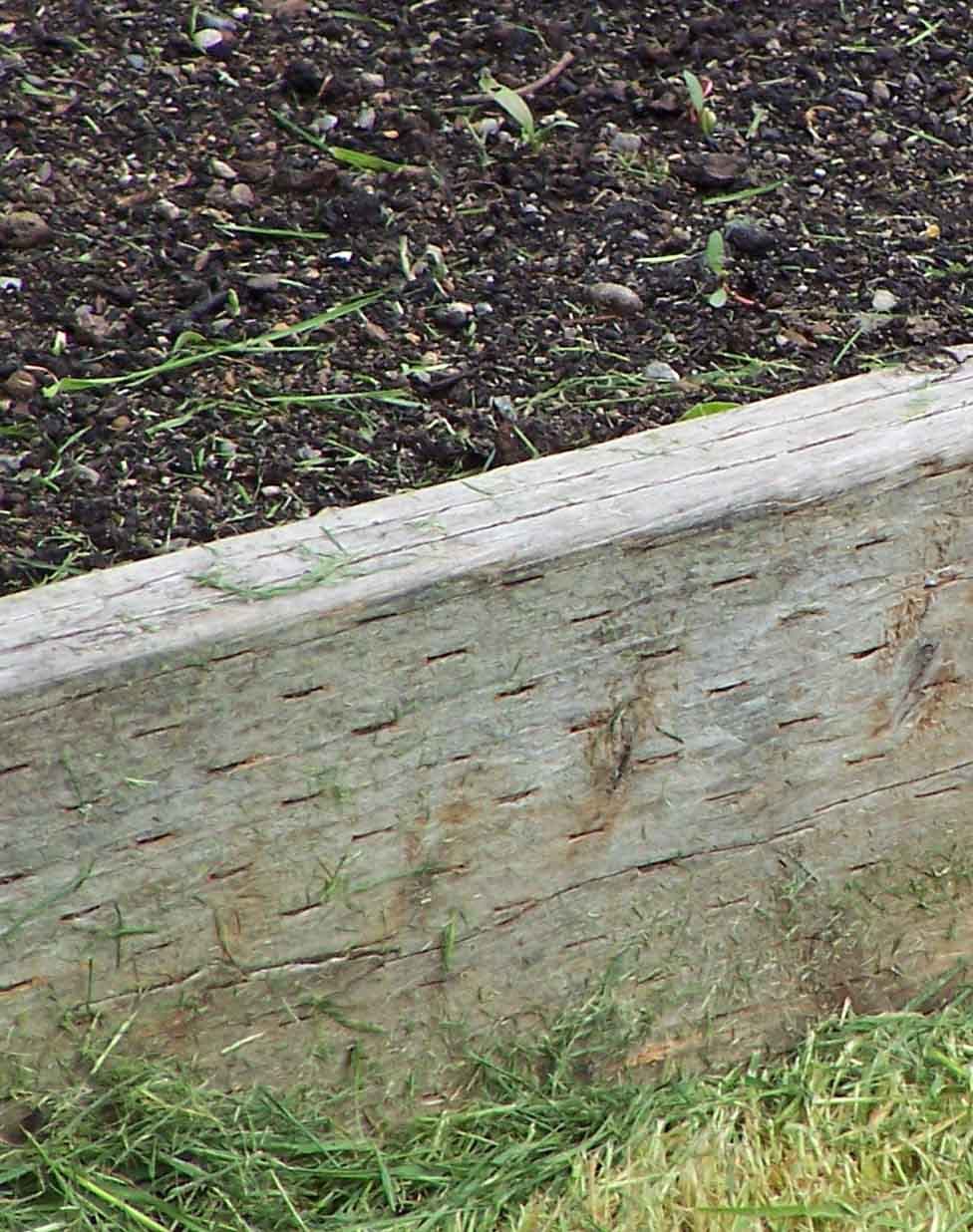A few months ago I posted a caution about using old pressure-treated timbers for vegetable gardens (see my Sept. 23 posting). I now routinely get questions about alternatives to these arsenic-laden materials, especially new treated lumber. What’s in the new wood that makes it rot resistant, and is it dangerous?

Rather than arsenic, new pressure-treated lumber has copper as its active ingredient. Though it also will leach out of the wood, there is not a human health hazard associated with its uptake by plants or animals. You probably get more copper leaching into the water carried through your plumbing (assuming you have copper, and not lead, pipes).
What about plastic timbers? Though I’ve not seen any literature about leachates from plastic lumber, I’ve seen some older plastic timbers that haven’t aged well – they can warp and twist. I would avoid those made of rubber, because decomposing rubber produces leachates that are quite hazardous (see September 30 for a discussion on rubber mulches).
Of course, there are many other materials one could use to corral their veggies – concrete blocks, stone, natural wood, etc. Do you have a favorite? Post a comment to let us know!
We used a combination of material for a specific look – new pressure treated lumber for the straight lines (if it’s not toxic, why not use it?) and a willow wattle for the curves. Yes, the wattle will need replaced every few years, but it looks great and it works like a charm. This was the perfect year to see if soil would wash through it – the wattle passed with flying colors 🙂
Thanks for a fun and informative blog.
I like the idea of wattles! Who says that materials have to be permanent?
When I lived in a tropical climate we used Banana/Plantain trunk to shore up raised beds. The stems degrade in a year or so and become great potasium rich compost. And the female stems are done after they produce fruit anyways, might as well put them to good use. Just be advised fresh banana stem juice stains.
Mmmmm….tropical climate…fresh banana stem juice…just the perfect blog post, Foy!
When I lived in a tropical climate I would use straw bales. Sure, they’re pretty big, but they compost over a couple of years, at which time they’re dug into the veggie bed and replaced with new ones. I’ve been using lucern bales the last three years. The worms adore them. However, now that I live in a temperate region (or if a client baulks at the straw bale idea, which they usually do), I go for untreated red gum (Eucalyptus camaldulensis) sleepers. It’s a hard wood and is very resistant to rotting – chock full of polyphenolic goodness. They have a red hue to them for the first year or so before fading to a reddish grey. They look g
reat when used for garden beds and retaining walls.
Eucalyptus is a great idea, Jimbo! Cedars have the same property. None of them last forever, but we might as well use certain species’ natural resistance to our advantage. (By the way, what is a “sleeper?)
Jimbo – “chock full of polyphenolic goodness” – love it!
I could use a big bag of Eucalyptus leaves right about now – would stuff my head into it so’s I could breathe (lovely head cold).
Another point about the plastic timbers – they’re darn expensive. We used cedar boards for our little kitchen garden beds – it was much cheaper than the Trex and trex-alikes out there.
Not good to hear you have a head cold, Holly. They’re entirely unpleasant. And Linda, a ‘sleeper’ is just another word for a dirty great big plank of wood.
For a fast and dirty raised bed, I used cinderblocks. I don’t have the tools to cut to length, though I could ask to have lengths cut to size, having only a plug in drill makes it a hassel to drag tools and a long enough cord out to the garden. The beauty of cinderblock is that I can move and reconfigure length and wide and location easily. Only hassle of that is moving the soil pile, but that’s easy enough with a good shovel. Not the prettiest, but certainly the most convenient.
Cinderblocks are a great idea, Betz!Sturdy, inert, and mobile. I’m not talented enough to figure out how to make it prettier, but maybe other people might have ideas?
Hi Linda. There has been recent discussion stimulated by my conversation with you on gardening myths. One listener just built a large raised bed with cinder blocks. That data I’m finding is that there is “some” risk in using them for raised bed food gardens if the blocks fracture, due to the potential leaching of radium and arsenic as the blocks could include some percentage of fly ash. Do you have any updated information on this. I see your last comment was from 2009. Thank you.
Hi Joe –
I would suggest using more expensive concrete blocks instead of cinder blocks. Concrete blocks are made of Portland cement and won’t have the types of leaching issues that cinder blocks might. I can’t find anything on radium leaching – heavy metals would be the issue.